Snowsky Echo Mini
A very personal review of the Snowsky Echo Mini digital audio player.
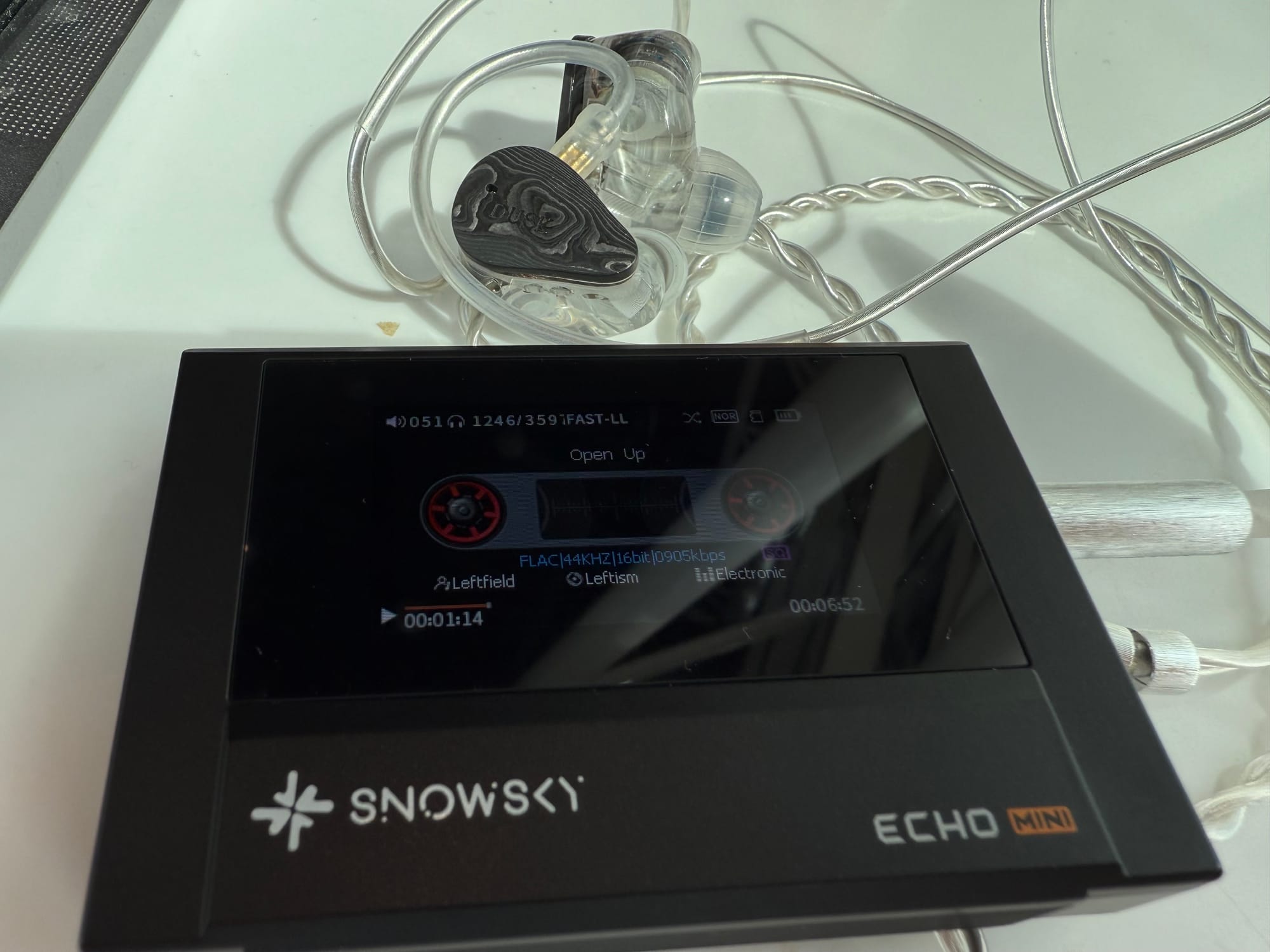
Part of my whole ‘get back to listening to CDs’ project that I’ve been doing this year is to cut the cord to music streaming almost (but not quite) entirely. As such, I’ve been entertaining the idea of having, aside from my home CD player, a portable one as well.
The problem is that portable CD players are big and old, and the Discman I had as a teenager is long gone. So what’s a girl to do?
Well, say hello to the Snowsky Echo Mini from Fiio. If you don’t know Fiio, they’re one of the leading “Chi-fi” brands at the moment, producing everything from IEMs and DACs to headphone amps, DAPs, bluetooth adaptors, and all the other neat gadgets audio nerds crave. Snowsky is a sub-brand that they’ve created for a series of retro-themed products, and the first three are the Echo Mini, the Retro Nano DAC and the Wind on-hear headphones (styled to look like the headphones that came with the original Sony Walkman in 1980).
The Echo Mini is a digital audio player, or DAP, which is the device category formerly known as MP3 players or, by most people, iPods. While mobile phones have mostly replaced MP3 players for music in the public consciousness, they aren’t perfect. The big one, of course, is music streaming services can just arbitrarily remove songs. I mentioned this in my post about CDs, but losing access to artists I want to listen to is a frustrating experience.
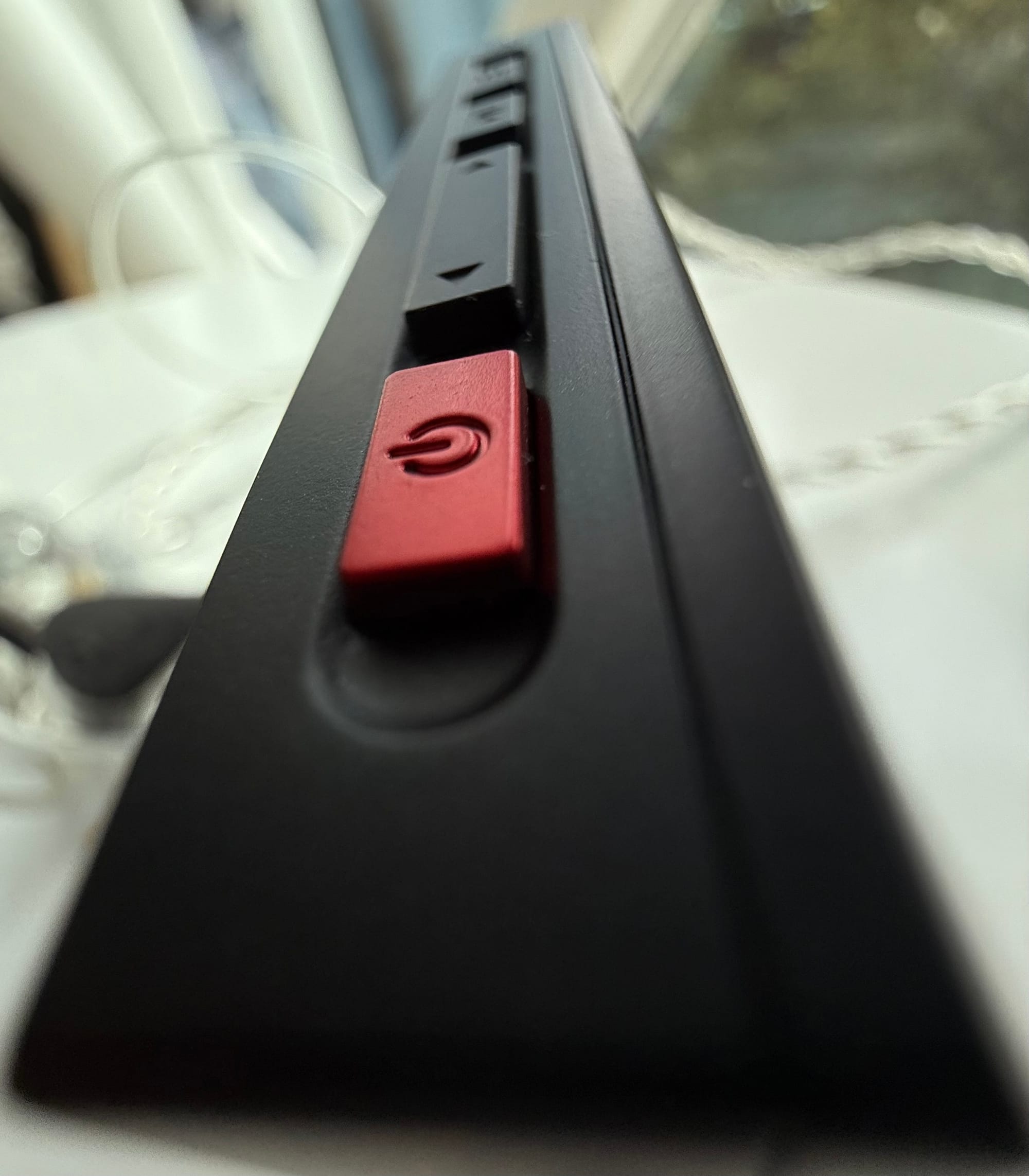
While a lot of DAPs can stream music (many are essentially just Android devices with the phone parts replaced by high-quality audio parts and are, therefore, Wifi-capable), they also tend to be quite pricey. Even a cheap Android-based one can set you back a few hundred dollars.
The Echo Mini is priced so low (I paid AUD$110 for mine but you can probably find it for less) that buying one wouldn’t be a huge commitment. It’s priced enough that I could buy it and if it didn’t work out, I wasn’t out a lot of money for something I rarely use.
For my purposes, it’s perfect. The goal, as I said above, was a portable CD player without the “carrying CDs and a CD player around” part. As a teenager, I had a big fat case that could hold my Discman and twelve discs in a neat little booklet. It had a wrist strap and I would just walk around with this case hanging off my wrists and my trusty Sony MDR-G72s on my ears. It wasn’t stylish, but it let me listen to my favourite music in a world without iPods.
That case could easily fit maybe twenty Echo Minis inside it, and any one of those could contain my entire CD collection as FLAC files on an SD card. That’s exactly how I’ve configured the little guy. A 256GB MicroSD card (the largest size it supports) with the FLACs I’ve been making of my CDs over the past few months. If I’m sitting on a train and I want to listen to a full album, then I can just bring it up using the intuitive-once-you-get-used-to-them button controls (no touchscreens here, thanks) and play it.
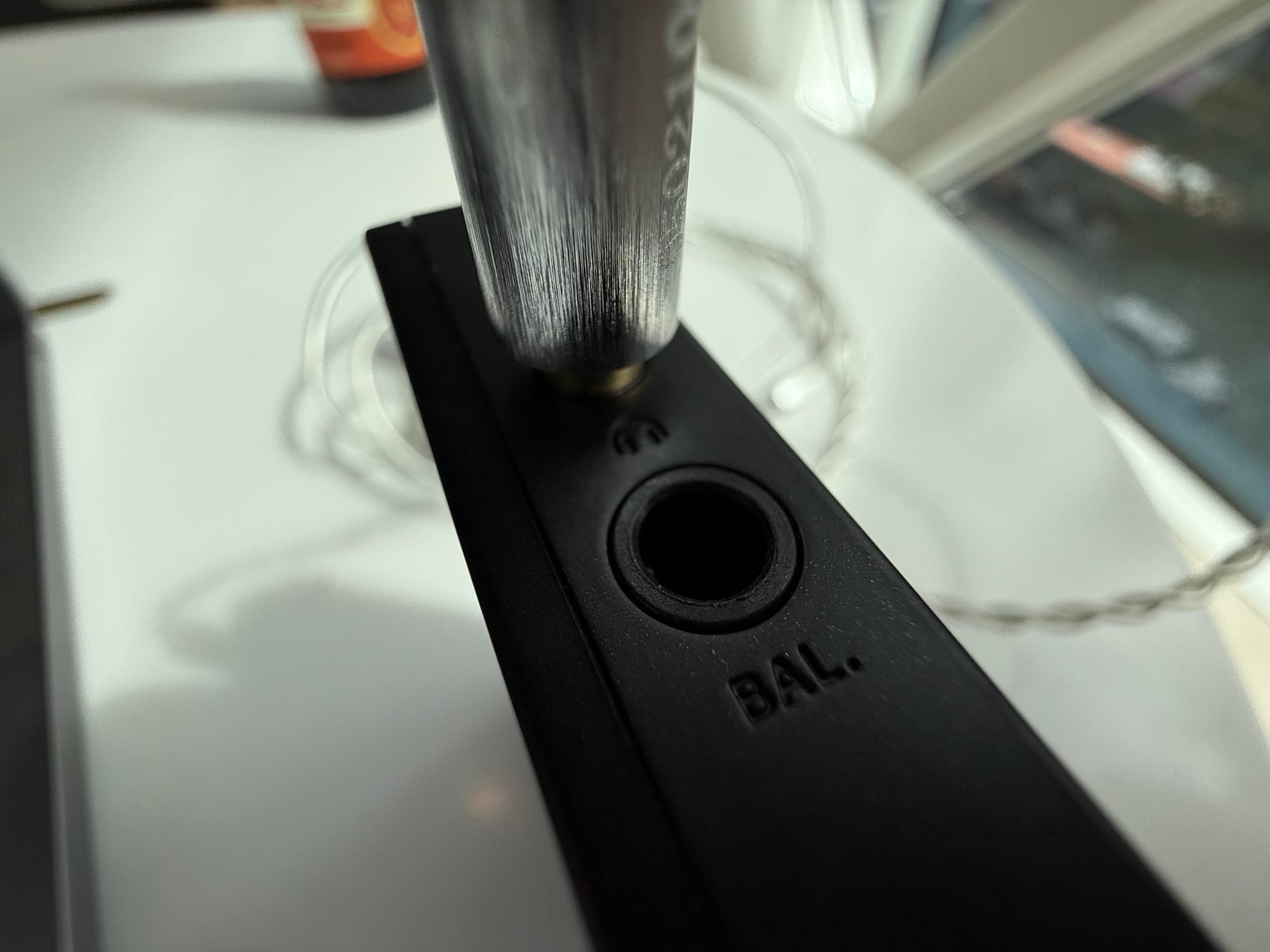
And yes, I could just do the same on my phone, but it’s not the same. Using the files I made from my CD collection makes it feel much more personal. Sure, they’re digital files that are identical to anyone else’s digital files of the same discs (thanks to AccurateRip, I was able to confirm this for almost all of the files I made), but they’re my digital files that I made. It’s a connection I wouldn’t have on Apple Music.
Using the Echo Mini is pretty straightforward. The buttons on the top are both transport and navigation controls. The red button is for power, and activates the screen when the device is playing music. Next to it are volume controls, which operate in reverse for some reason, and also function as left and right in the main menu, and up and down when browsing music. This isn’t as confusing as it might sound, as it’s obvious from context what will happen. These controls also function as track skip and, if you enable the feature, a fast-forward/rewind feature. It’s a lot, but it’s easy to understand since it’s always obvious from context what will happen.
Next to that is the play/pause button, which is also a confirm button. Next to that is a menu button that will bring up a menu for playback options. This includes features like cover art display (an alternative to the default “cassette” display), repeat and shuffle options, EQ options, and a couple of other things. If you’re on the main menu of the device, it will take you to the main settings, which has all the other options. The final button on the top is the back button which is, well, a back button.
The UI is pretty easy to navigate, especially if you’re familiar with navigating small electronic devices from the early 2000s. It didn’t take me any time to get the hang of it, and I can move about pretty fast. The main music player UI is the main feature of the whole device, presenting a pair of cassette tape reels spinning (they even spin in the correct direction after the latest firmware update!) to match the overall “world’s smallest walkman” aesthetic of the Echo Mini.
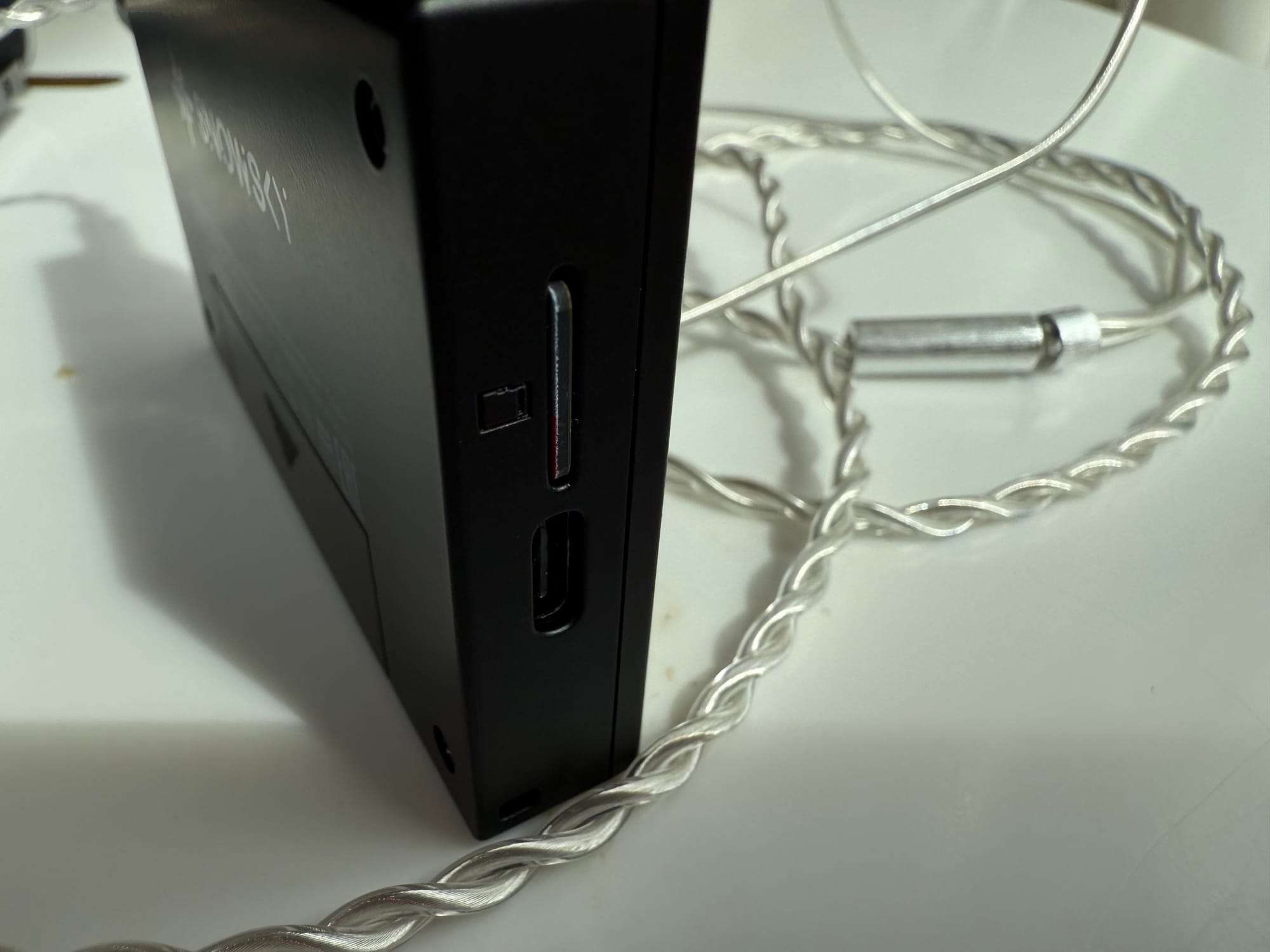
The right side of the unit is the real business end. This is where the headphone jacks are. You get a normal 3.5mm jack, and below it is a 4.4mm balanced output. If you don’t know what a balanced output is, then I won’t curse you with such knowledge, and you can safely ignore the jack.
Sound quality is excellent. Fiio makes a big deal about the device using Cirrus Logic 43131 digital-to-analog converters, but that just means it’s using the same DAC chip that every other decent audio device uses. They do their job— turning the ones and zeros of digital audio files into voltage— admirably. The important part is that they provide a really clean, full signal with enough power to drive most headphones and IEMs. I use them with my Moondrop Dusks and they sound fantastic. There’s bass, there’s mids, there’s treble, what more do you need?
(Just an aside here, but the thing that’s most going to affect the audio quality of the Echo Mini, or any device you listen to really, is the headphones or IEMs you’re listening to it with. Everything else is just gravy.)
More importantly, the Echo Mini handles more or less any audio files you can throw at it. Aside from FLAC, it will play AAC, MP3, and even the old WMA format that nobody other than a few ageing Microsoft programmers remember. It can also do high resolution audio, which is essentially audio with 24 or 32-bits of resolution (CD quality is 16-bits) and sample rates above 48Khz (CD quality is 44.1Khz).
All of these files can be loaded into the 8GB of internal storage, or on a MicroSD card of up to 256GB. This is a hard limit, too: the device won’t access data on cards larger than that. It might be the biggest single drawback of the Echo Mini, and I’m not entirely sure what the motivation for it was. I guess the bright side is that you can just move the card with you if you ever decide to move up to a more expensive DAP.
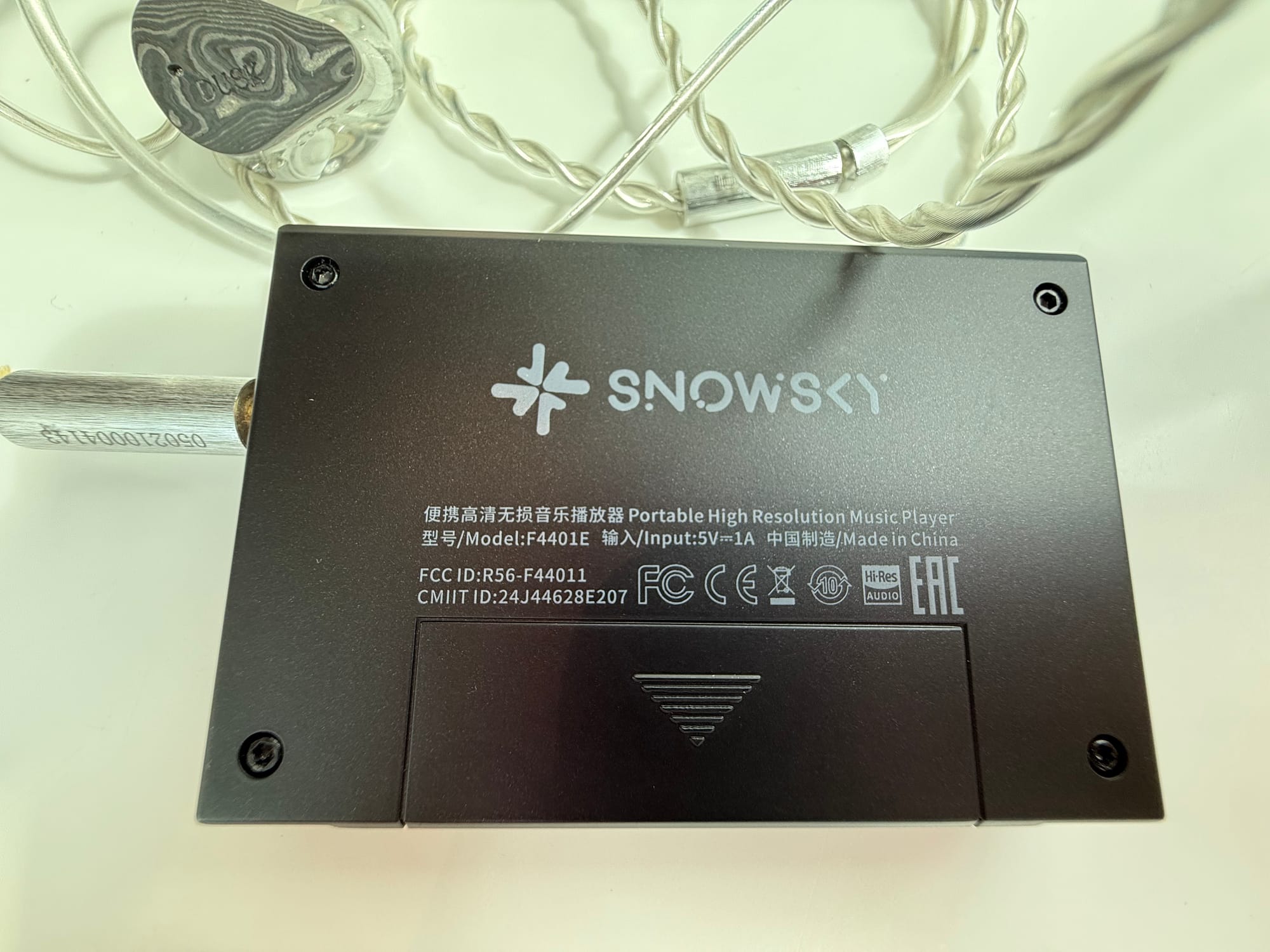
Regarding the storage, I did run into an odd issue here. When I first got the device, I couldn’t install new firmware, and I ended up having to use the system menu to format both the internal storage and my SD card. It also has an issue where if I put new files on it from a computer, it will forget all the files on the device until I manually update the internal database by going to to the file browser and accessing the SD card from there. Weird behaviour, and definitely not how it should work, but at least I can make it work for now.
I should mention that the Echo Mini does support bluetooth as well. It’s kind of a poor implementation, requiring you to pair and un-pair devices if you want to change what you have it paired with, and also it only supports the SBC codec, meaning that you can’t use it with Apple’s AirPods. For me, this isn’t a dealbreaker as I only intend to use it with my dusks on a wire, but I know it will be for others.
Finally there’s battery life. Fiio claims the Echo Mini will get 15 hours, and I haven’t been able to test that myself, but I did notice the battery ran down a lot faster than I expected last week. My suspicion is that I left the device in its sleep mode for a few days and that’s what did it. I would recommend powering the Echo Mini down completely when you’re finished listening. It does take a few seconds to start up, but nothing egregious.
I’m not gonna do double-blind A-B testing or any of that audiophile nonsense here. This isn’t a deep technical review. If that’s what you’re after, the huge nerds at head-fi.org have you covered. What I am gonna tell you is that, in my extremely subjective personal experience, the Snowsky Echo Mini is an absolutely killer little music player for the money.